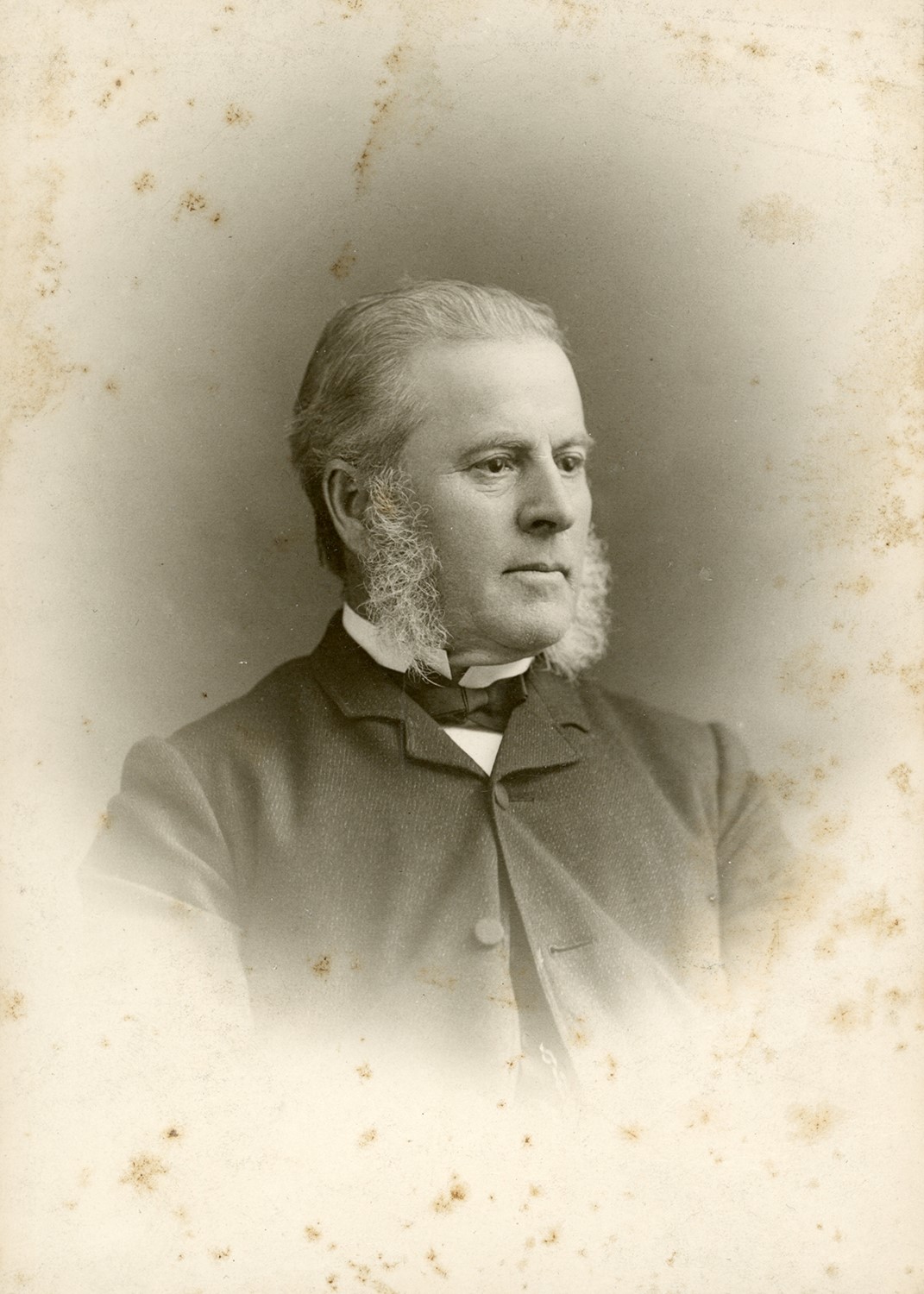Sir Henry Newell Bate
1828-1917
Bate was one of Ottawa’s most important businessmen, involved in wholesale imports and food retail (he became the main food purveyor to Rideau Hall). On his golden wedding anniversary, the Ottawa Citizen wrote that “the capital has no citizens more respected or esteemed than Mr. and Mrs. Bate.” The Bate Building still standing at 111 Sparks St was the headquarters of the Bate grocery business (a large warehouse on Canal St was taken down when the Driveway was built).

In 1864, Bate hired Thomas Fuller (the architect responsible for the Parliament buildings) to build Trennick House (named after Bate’s birthplace in Cornwall, England) at 216 Chapel St. The house, outbuildings and garden originally occupied the full block bound by Daly Ave., Chapel St., Besserer St. (then St Paul) and Friel St. (then Gloucester). Bate and his wife Catherine raised fourteen children at Trennick House, nine of whom lived to adulthood.
Although the house was demolished in the 1940s and it is said that Mackenzie King acquired segments of windows and doorways for the ruins he assembled at Kingsmere, Bate left a large enduring physical legacy In Sandy Hill: As a benefactor of the Anglican Church, he donated the land for St Alban’s Church (Daly Ave. and King Edward St.) and in 1900 funded the construction of All Saints’ Church (corner of Chapel St. and Laurier Ave. E.). Later, his children donated the bells for the church’s carillon and, in 1934, Bate’s third son built the adjoining Bate Memorial Hall. As the first chair of the Ottawa Improvement Commission, the forerunner of the National Capital Commission, Bate was responsible for draining the swampy Dominion Rifle Range that became Strathcona Park.
Bate diversified into real estate by buying many of Besserer’s Sandy Hill properties and developing them (the Bate Realty Company owned real estate in Sandy Hill until 1946). Upon their marriage, Bate provided his sons with grand houses in Sandy Hill, several of which still stand (Gerald Bate lived at 455 Wilbrod, while his brother Harry lived at 440 and brother Thomas Cameron at 469. Their sister Claudia lived at 396. There was a ballroom in the basement at 440 Wilbrod that ran the entire length of the house.) While most of Bate’s sons went into the various family businesses, Llewellyn was best known for his love of sports and having recruited and managed the players for the Ottawa Silver Seven, winners of the Stanley Cup between 1903 and 1906. Bate had a summer cottage in St Patrick (beside Rivière du Loup on the St Lawrence River) as did Sandy Hill neighbours Sir John A Macdonald and James Woods. He was a founder of the Beechwood Cemetery and is buried there.
